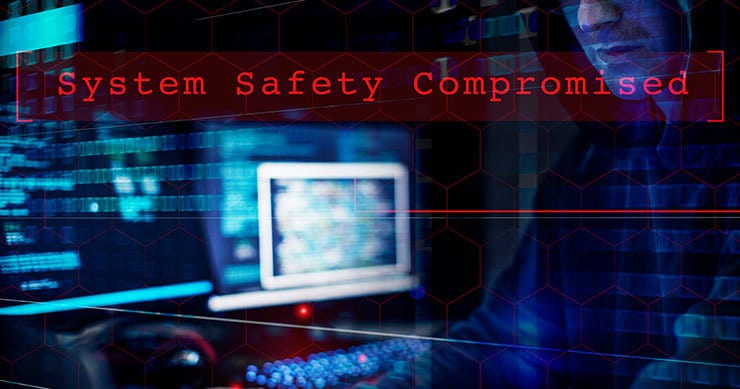As work becomes more digitized and connected to the cloud, the risk of cybersecurity threats and attacks grows, and businesses everywhere are looking for ways to protect themselves. IBM’s Cost of a Data Breach Report 2021 recorded the highest cost of data breaches in the entire history of the report at $4.24 million.
Organizations with a keen eye are searching for preventative measures like IT security controls for protecting their sensitive data. Adopting basic policies and technologies for data security controls is the perfect first step towards:
- Preventing incidents with safer management of critical data
- Passing data audits
- Staying compliant with data privacy regulations like the General Data Protection Regulation (GDPR) and the California Consumer Protection Act (CCPA)
What are data security controls, and how do you choose the right ones for your specific business case?

What Will Data Security Controls Do For Your Company?
You might be wondering why you should go through the trouble of weaving such controls into your workflow. Data security controls aim to achieve a few key objectives in business-grade data management.
Access Permissions
The most obvious benefit is preventing sensitive information from falling into the hands of those who don’t need it. In business, we call this concept “the principle of least privilege.” Users receive only the minimum amount of data needed to do their jobs to minimize the attack surface of a potential cybersecurity incident.
Data privacy security controls applicable here would involve:
- Safe password practices
- Multi-factor authentication
- Encryption
- Cybersecurity configuration
- Security monitoring software
Data controls when applied to access permissions aim to prevent data breaches by stopping unauthorized access of sensitive business data.
Data Integrity
In addition to unauthorized access and use, you don’t want unregistered third-parties to modify your data. Even authorized users might make mistakes and make changes that you don’t want.
Data controls can also protect the integrity of sensitive business data. The technologies applicable in this sense are digital signatures and hashing algorithms.
Convenient Access
While banning data availability from unauthorized entities is important, you also want to make sure that authorized users aren’t impeded from using the data that’s vital to their jobs. Data security controls must be aware of the needs of genuine users and ensure seamless, efficient access whenever it’s allowed.
Start Getting Value With
Centraleyes for Free
See for yourself how the Centraleyes platform exceeds anything an old GRC
system does and eliminates the need for manual processes and spreadsheets
to give you immediate value and run a full risk assessment in less than 30 days
What Kinds of Controls Exist?
Data security controls can be categorized into two main groups: internal controls and incident response controls.
Internal
Internal controls are exactly what they sound like; they protect data as it travels through internal workflows and operations. Examples include:
- Administrative controls are the internal policies and procedures implemented to protect the security of sensitive data. It details acceptable data handling regulations and outlines the penalties for violations of such a policy.
- Technical controls cover all the tools and software used to achieve data security, including role-based access control and encryption.
- Architectural controls involve how the business as a whole handles the data on its own servers as well as any data in the cloud. All devices involved in data use and transfer are included here, such as personal electronics, cloud services, and other information systems. These controls look for weak points in your network and address them appropriately.
As mentioned before, internal controls must be comprehensive to prevent breaches and other incidents without compromising on workflow efficiency.
Incident Response
No matter what preventative measures you implement, you can never rule out the possibility of a successful cyberattack on your organization. Incident response is part of every smart data security strategy. The controls to use here are:
- Preventative ones like the principle of least privilege mentioned before as well as network security enforcement technologies.
- Visibility features to detect network access and usage and report on unauthorized intrusions and strange activity before they become major problems.
- Response controls are for disaster recovery and corrective actions after an incident occurs. Restoring lost data and applying security patches are examples of response controls.
Data security management and control involves a large variety of controls, policies, and technologies not only to prevent cybersecurity incidents from starting but also to respond to them and minimize damage if they do happen.
How Do You Take Advantage of Data Security Controls?
Your data security journey depends on the needs and circumstances of your firm, but a few basic features to start with are the following.
- Audits to monitor activity and spot suspicious behavior early on.
- Risk management to detect vulnerabilities. Penetration testing is an example.
- Remote access controls to protect data as it travels between on-site and remote staff.
- Data management, especially discovering where it is and classifying it based on risk.
- Antivirus and anti-malware software to prevent infections at endpoints.
- Backup features to recover lost data.
Don’t let data security fall behind on the priority list. Take control of where your sensitive information is to stay compliant with data security laws and drive your business to success.
Ensure Critical Data Protection Through IT Security Controls
As your business grows, the cybersecurity risks you are exposed to increase as well. Compliance, in other words, is more difficult to achieve the later you start.
Begin implementing preventive controls for information security early on to protect future growth. Data security controls should be a high priority for any management team.
Start Getting Value With
Centraleyes for Free
See for yourself how the Centraleyes platform exceeds anything an old GRC
system does and eliminates the need for manual processes and spreadsheets
to give you immediate value and run a full risk assessment in less than 30 days





